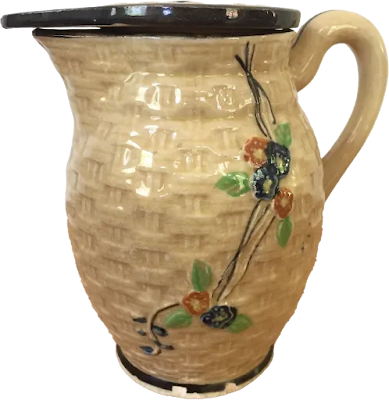There is quite a bit of ignorance about the definition of Victorian majolica. This is actually quite natural. No one can know everything and a specialized collecting area like Victorian majolica is bound to confuse people. This post is an attempt to clarify some of these misconceptions to those who may be new to this particular collecting area.
For the purpose of this blog the term majolica is used to describe the lead-glazed pottery invented in England by Minton in 1851 and continued throughout Western Europe and the United States until roughly around 1920. It continued in Central Europe until the onset of WW2. Three examples of Victorian majolica can be seen directly below.
To make it simpler, let me just say upfront that any pottery marked “Italy,” "Japan,” “China” or “Mexico” is not Victorian majolica as none of these countries ever produced lead-glazed majolica pottery. Let me elaborate.
The pottery most commonly confused for majolica is maiolica. I have discussed the differences between maiolica and majolica before, as well as described how this confusion began. It’s really the fault of the inventor of Victorian majolica, Léon Arnoux and his employer Minton. The two forms were confused from the beginning and the confusion has persisted ever since. Although the two illustrations below are from 16th century Italy, this highly detailed, hand decorated tin-glazed pottery is still in production today throughout the world. The most obvious difference is that majolica has lead-based glazes whereas maiolica has tin-based glazes. Delft nor faïence are considered majolica either because they too have tin based glazes. For clarification on Deft please refer to my post on faïence below.
A type of pottery often confused for majolica and commonly found in the U.S. is Mexican Dripware. This is a specific product made in Oaxaca, Mexico for the tourist trade. It has a folksy, primitive look and can be attractive in a large grouping but it is not majolica.
The Japanese created an inexpensive pottery for export similar in look to majolica during the 20th century. These pieces are marked "Japan," "Occupied Japan" or "Made in Japan."
Another pottery that is confused for majolica is faïence as mentioned at the top. Most commonly referred to as “quimper” in the United States it originated near Quimper Brittany, France by potter Jean-Baptiste Bousquet in the late 17th century but continues production to this day. The term, however, has become a generic one describing any tin-glazed pottery with a similar type of decoration. To add a bit of confusion though, the term faïence is sometimes erroneously used to describe any form of colorful pottery made in France. More confusing yet, the decoration technique is sometimes used by the same manufacturers who made majolica. Quimper has a naïve hand panted Breton folk art decoration that speaks for itself. Delft ware is a type of faïence with a different decoration inspiration originating in Northern Europe.
In the United States the Chesapeake Pottery of Baltimore used the term faïence to describe some of their lead-glazed majolica. This was probably done for marketing purposes. Imported ware was considered more desirable by American consumers, hence a piece with a European sounding name may sell better.
Nothing is ever cut and dry in the antique pottery world!
It should go without saying that the ceramic reproductions made today that imitate majolica such as these frog pieces from Southern Asia are not majolica but should be considered majolica-style pottery. Victorian majolica was never made in Asia. A search through this blog on reproductions can be helpful to the novice in identifying these.
Navigating pottery attribution can be a hazardous one even for professionals as I have written on this blog but with a little experience anyone can master it... or at least come close!




















No comments:
Post a Comment